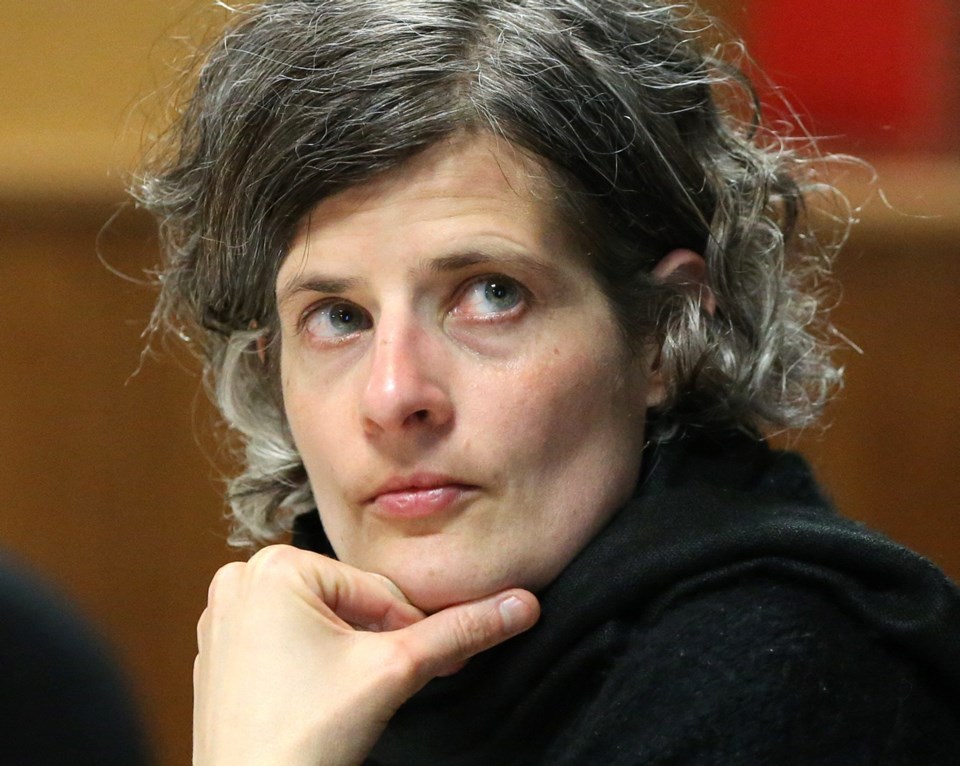Homeowners could be forced to make thousands of dollars in repairs or replace cracked or blocked sewer lines on their own properties under a model bylaw being circulated by the Capital Regional District.
CRD staff estimate the average cost to repair or replace what’s known as a lateral — the sewer pipe connecting a house to a municipal sewer line — if it’s found to be defective could be between $5,000 and $10,000.
The bylaw now being circulated to the municipalities would require homeowners to maintain the sewer pipes on their properties, making sure they are not cracked or broken and that they’re clear of obstructions such as roots or debris and not cross-connected to a storm drain.
It would authorize the municipality to inspect the line and order repairs if necessary. “We live in an old city — our housing stock is among the oldest in British Columbia. So everyone’s got to take part in fixing the problem,” said Victoria Mayor Lisa Helps, who chairs the CRD’s core area liquid waste management committee.
Municipalities are being asked to consider implementing the bylaw. While the model bylaw suggested penalties of up to $10,000 and six months in jail for failing to comply, Helps said no one is expected to be jailed.
Sewer laterals account for 55 per cent of the pipe in the sewer system, and in the core areas of Oak Bay, Victoria, Esquimalt and Saanich, much of that pipe is 70 years-plus old. Problems occur when rainwater enters the sanitary sewer system through what’s called inflow and infiltration: Inflow is rainwater entering sewer pipes through cross-connections, while infiltration is ground water entering the sewer system through cracks in pipes or leaky joints.
Sewers are designed with enough capacity for a certain amount of inflow and infiltration, but when there’s too much, it results in overflows. As the CRD inches toward building a sewage-treatment system, the objective is to reduce the amount of inflow and infiltration so the plant that is eventually built is treating effluent and not rainwater.
Esquimalt Mayor Barb Desjardins said addressing the problem is crucial to reducing sewer flows and the resulting requirement for sewage treatment. “Spending money on [inflow and infiltration] and getting people to deal with that situation and that problem really helps in the future in terms of what exactly are the flows and what are we treating?” Desjardins said.
Under the proposed model bylaw, municipalities have the option of offering no-interest loans to homeowners to assist in repairing or replacing a defective lateral, as well as incentives to offset the cost of inspection and repairs.
The four core municipalities have committed to reducing inflow and infiltration. Oak Bay has a major problem with it because there is no separation of storm and sanitary sewers in the Uplands, Helps said.
“We are building a plant that is treating Oak Bay’s rainwater, not just their sewage, because there is no separation,” Helps said.
Oak May Mayor Nils Jensen told the core area liquid waste committee his municipality has just awarded a contract for design work on separating the two, and a plan is in place to use gas-tax funds to do the work in phases.
The problem isn’t nearly as acute in newer municipalities such as Colwood or Langford, where the sewer pipes are relatively new.


